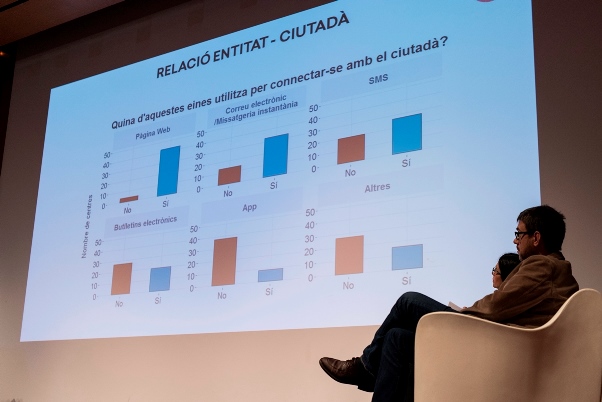50% participation in the first edition of the survey of Citizen Attention Officers
11 of May of 2018
Last April 2017, the Trends Map called a meeting to gather the Citizen Attention Officers of some thirty providers with the aim of designing a pilot survey that would complement the traditional diagnosis of the Heads of Information Systems with a rigorous approach to the user’s view of the service. The day consolidates the well-welcomed survey released in the last quarter of last year in SISCAT Provider Entities (PE), which achieved a 50% participation in the first edition, and which analyses the perception of those responsible for four areas: Entity-Citizen relationship, My Health, Change Management and Future Vision. It is briefly commented below.
Regarding the relationship between the entity and the users, the results show that the Provider Entity communication channels are conventional (web pages and reminders via email and SMS) and that their use is based primarily on administrative aspects (reminders and scheduling of visits) or communications aimed at promoting health with a general approach. The Citizen Attention Officers show high expectations over the usefulness of the services already available in My Health and those likely to be brought in, to give citizens a customised supply: My Health is therefore seen as a pivot in the communication with the user that is widely recognised and accepted in the sector.
In terms of change management, there is not a significant increase in complaints caused by the adoption of new ICTs in the centres; this is consistent with the fact that most of the respondents declare that they take into account the patient’s opinion and make an effort to help the user with the ICTs. On the other hand, however, it identifies those over the age of sixty as the population group with the highest risk of being left out of the use and mastery of ICTs. Citizen Attention Officers would agree on centralising patient care in a single portal.
Finally, the future view of the most disruptive elements in the citizens’ relationship with technology in the field of health is collected. They firstly identify the non-face-to-face nature (with the pros and cons of this) and the increase in the use of devices (wearables, apps); consequently, the new role of the citizen-patient in health management. Secondly, they indicate the role of the data: the need for a change in the care provision system in terms of the integration of information from different sources while preserving the privacy of citizens’ data. The vision of the Provider Entities therefore appears to be closely aligned with the technological innovations of the sector and the lines of action of the department.
This diagnosis has been possible thanks to the participation of the Citizen Attention Officers, to whom we are sincerely grateful for their collaboration.
-
The view of the Supplier Entities is much in line with the technological innovations of the sector and the department’s lines of action.


